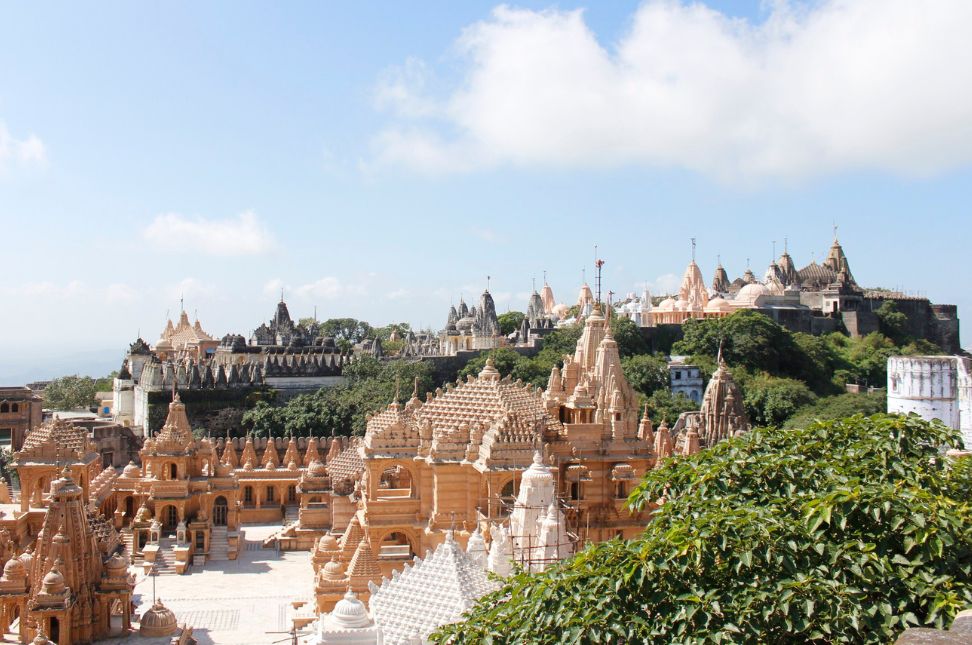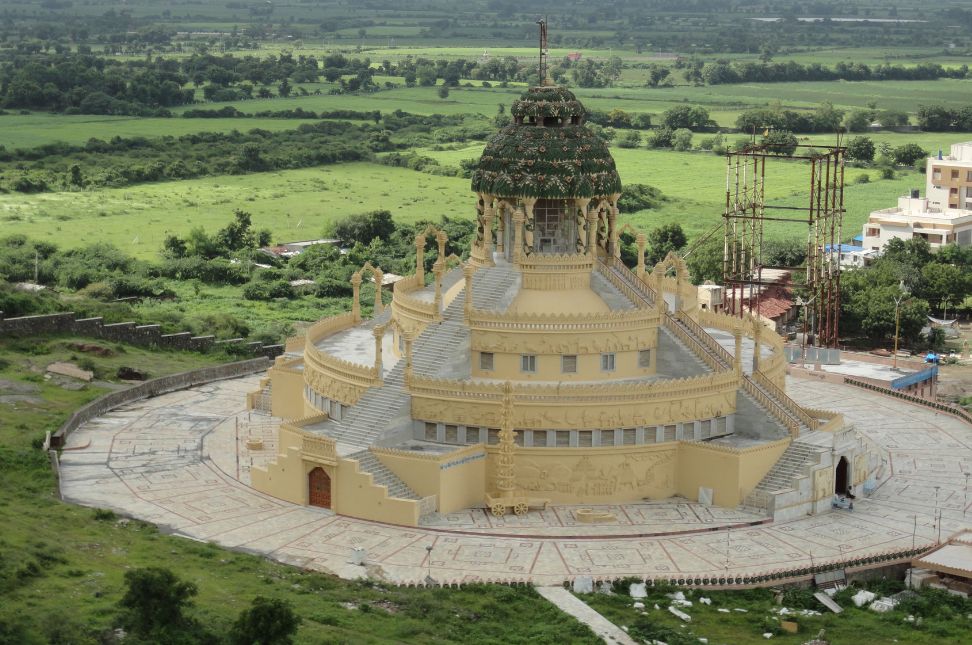India is known for its rich spiritual heritage, and among its most revered sites are the Palitana Temples. Located in the state of Gujarat, these temples hold deep religious significance for the Jain community. The Palitana Temples are often considered the world’s largest temple complex, with over 900 temples spread across the Shatrunjaya Hills. For travelers from the US, UK, Canada, and Australia, a visit to these temples offers a unique spiritual experience and an opportunity to witness the architectural grandeur that India has to offer.
The Religious Importance of Palitana Temples
For Jains, visiting the Palitana Temples is not just a pilgrimage but a lifelong aspiration. It is believed that every Jain should make at least one visit to the temples in their lifetime. The temples are dedicated to various Jain Tirthankaras (spiritual teachers), with the primary temple dedicated to Adinath, the first Tirthankara.
The location of the Palitana Temples is significant because the Shatrunjaya Hills are considered a sacred place where numerous Jain monks attained enlightenment. Pilgrims ascend more than 3,500 steps to reach the top, making the journey both a physical and spiritual endeavor. The ascent itself is viewed as a form of devotion, symbolizing the overcoming of worldly obstacles on the path to spiritual liberation.
The Architectural Marvels of Palitana
The Palitana Temples are not only important for religious reasons but also admired for their stunning architecture. These temples, some of which date back to the 11th century, are intricately carved from marble, showcasing the skill of ancient craftsmen. The temples are arranged in clusters, each with its own unique design, but together they form a unified expression of devotion.

One of the most striking features of the Palitana Temples is their detailed stone carvings. These carvings depict scenes from Jain mythology, life events of the Tirthankaras, and various symbols of Jainism such as the lotus and the swastika. Each temple offers a serene atmosphere, allowing visitors to feel a sense of peace and reverence as they explore.
At the highest point of the temple complex stands the Adinath Temple. This temple, dedicated to the first Tirthankara, is the focal point for pilgrims. Its ornate domes and spires are visible from afar, offering a visual treat for those making their way up the hill.
The Spiritual Journey: A Pilgrimage Like No Other
A visit to the Palitana Temples is more than just a sightseeing trip. It is a journey of faith, devotion, and endurance. The pilgrimage requires an early start, as climbing the 3,500 steps can take several hours. Many pilgrims begin their ascent at dawn to reach the top before the afternoon heat sets in. The climb is symbolic, representing the shedding of material attachments and the path to spiritual enlightenment.
While the ascent can be physically demanding, it is considered a cleansing process. For Jains, walking up the hill signifies the purification of the soul. Non-Jain visitors are also welcome to participate in this journey, and it offers a chance to immerse themselves in Jain spirituality and values such as non-violence, compassion, and respect for all living beings.
Once at the top, the view is breathtaking. The sprawling temple complex, with its shimmering marble structures and the panoramic view of the surrounding landscape, is a reward for the pilgrims’ efforts. For many, the spiritual atmosphere and the beauty of the temples combine to create a profound and memorable experience.
The Jain Philosophy Reflected in the Temples
The Palitana Temples are a reflection of Jainism’s core beliefs and values. Jainism is centered on principles such as non-violence (ahimsa), truth (satya), and non-attachment (aparigraha). These values are evident in the design and atmosphere of the temples. The peaceful surroundings, the simplicity of the pilgrimage, and the emphasis on inner reflection align with Jain philosophy.

Jains believe in the equality of all life forms, and this respect for life is also evident at the Palitana Temples. The pilgrimage path is carefully designed to avoid harming even the smallest insects, a testament to the Jain commitment to non-violence. Additionally, the temple complex is entirely vegetarian, and the consumption of food within the premises is strictly regulated to ensure that no harm is done to any living creatures.
A Unique Experience for International Visitors
For visitors from TIER 1 countries like the US, UK, Canada, and Australia, a trip to the Palitana Temples offers a deep dive into Indian spirituality and culture. The experience of climbing the Shatrunjaya Hills and exploring the ancient temples is unlike any other. It allows travelers to step away from the busy tourist routes and discover a place of calm, devotion, and history.
While the religious aspect of the temples is paramount, international visitors will also be captivated by the architectural beauty and the sense of serenity that pervades the temple complex. It is a place where one can reflect, meditate, and connect with the deeper aspects of life.
For those interested in architecture, the Palitana Temples are a treasure trove of intricate design. The detailed stonework, the graceful domes, and the sheer scale of the temple complex are a testament to the craftsmanship of ancient Indian builders. Photographers and history enthusiasts will find ample opportunities to capture the beauty of the site.
Practical Tips for Visiting Palitana Temples
If you’re planning a visit to the Palitana Temples, there are a few practical things to keep in mind. The temples are located in Gujarat, about 215 kilometers from Ahmedabad, the state’s largest city. The nearest town to the temple complex is Palitana, and visitors can reach the site by road from Ahmedabad or Bhavnagar, the nearest major city with an airport.
The best time to visit the Palitana Temples is during the winter months, between October and February. During this time, the weather is cooler and more comfortable for climbing the steps. Make sure to wear comfortable clothing and good walking shoes, as the climb can be strenuous.
Visitors should also be mindful of the temple’s rules. Photography is generally not allowed inside the temples, and modest attire is required out of respect for the religious significance of the site. Additionally, be prepared to leave your shoes at the base of the hill before beginning the ascent, as footwear is not allowed in sacred areas.
Conclusion: A Pilgrimage Worth Taking
In conclusion, the Palitana Temples are not just an architectural wonder but a spiritual journey that leaves a lasting impression on visitors. Whether you are a Jain pilgrim or an international traveler seeking a unique experience, these temples offer something profound for everyone. The combination of history, spirituality, and natural beauty makes the Palitana Temples one of the most remarkable pilgrimage destinations in the world.
For those visiting India, the Palitana Temples should be high on the list of places to explore. Their beauty, serenity, and significance will leave a lasting memory, offering insight into one of India’s most ancient and peaceful religions.




